Battle of Kasserine Pass Group Build: 1/48 P-38F “Texas Nightmare”
By November, 1942 ,the 1st Fighter Group was assigned the mission to participate in the invasion of North Africa. Their P-38's were to fly 1500 miles non-stop to Oran, Algeria. If they encountered trouble Gibraltar could be used as a stopping point if need be. But the airport there was always over crowded. After taking of for Oran, Ilffrey would lose one of his 150 gallon belly tanks. Too low on fuel to make Oran,Ilfrey realized he couldn't make Gibraltar either, so his options were ditching at sea or landing in Portugal. Fortunately, he found an airport near Lisbon, where he was greeted with six plumed hat horsemen with sabers and pistols. He was interrogated for about an hour an was informed that Portugal being a neutral country, interned all combatant pilots and their aircraft for the duration of the war. That explanation didn't sit well with this Texan.
A Portuguese pilot expressed interest in Jack's P-38 as he had never seen an American fighter plane let alone a P-38. They had plans to refuel it and fly it to a military base. The pilot asked Jack to explain the controls to him which he did. As the pilot was siting on the wing and a people were standing around another P-38 was circling to land, so the crowd left to greet the other fighter. Jack threw the throttles full open,which bounced the pilot off the wing, and proceeded to taxi and take off. Once airborne, he realized he had no chute, no map and no May West. And he recognized the P-38 that was landing was that of Capt. Jack Harman. Harman and his plane would sit out the war in Portugal.
Construction:
The Academy kit has been around for several years and was build pretty much out of the box. I did add an Ultracast seat and some wheels. Also cut the front wheel then took some aluminum tubing to lengthen it as well as give it a tilt to the left. Aftermarket Nav lights were added and Tamiya paints from rattle cans were used, A Pitt pen highlighted the panel lines and aftermarket decals from Kits-World were used to denote Jacks plane. Pastel chalk was used for exhause and gun stains and that's about all she wrote.

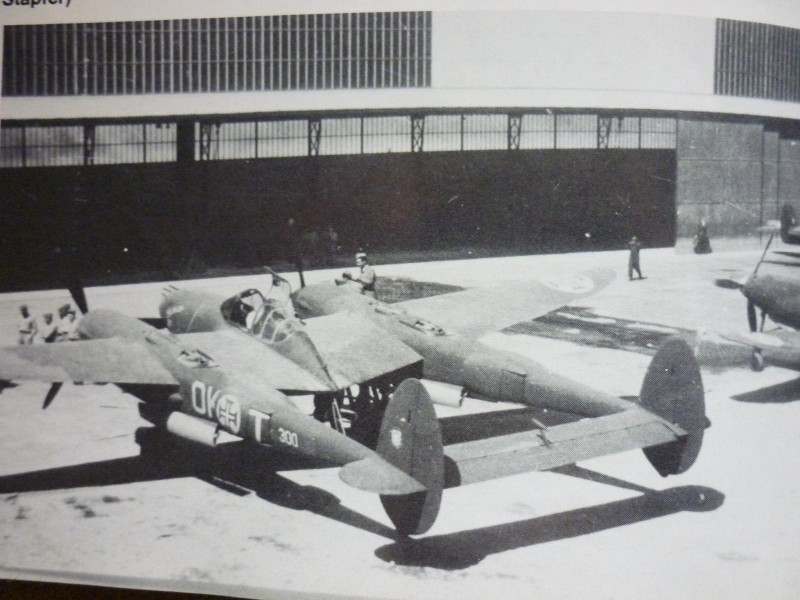
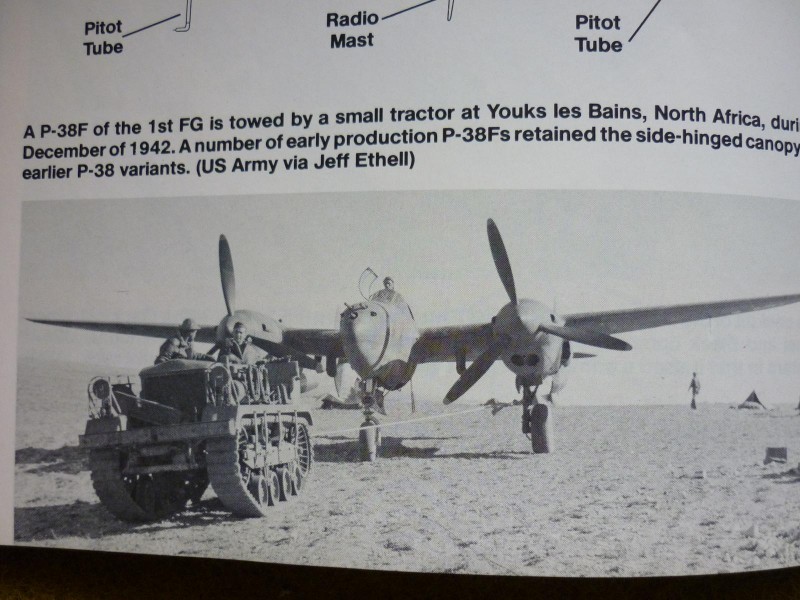
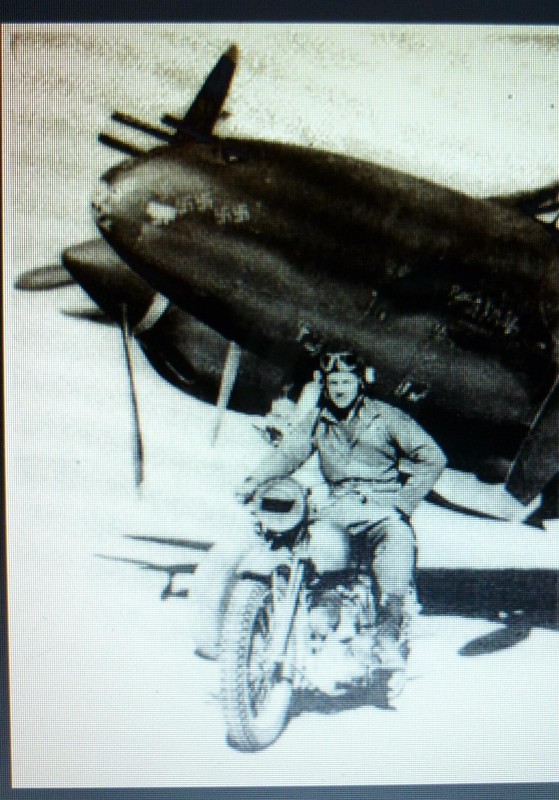

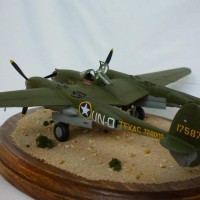
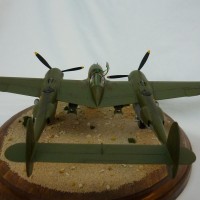

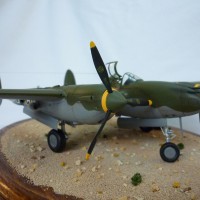
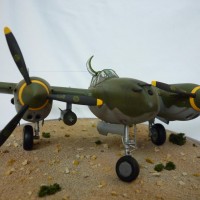
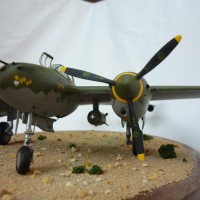
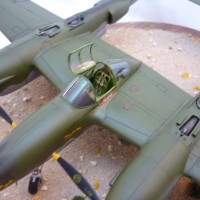

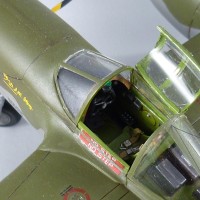
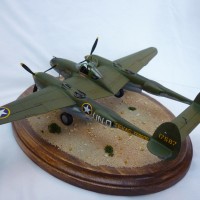

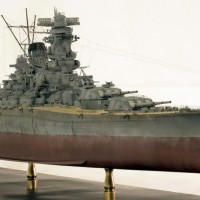
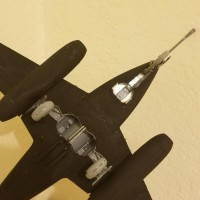
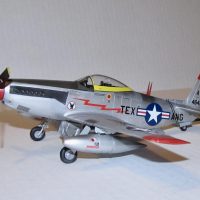
Great presentation AND build, Tom...I love it!
Thanks Craig.
Well done Tom. That's one of my favorite P-38 schemes.
Thanks John always liked the P-38. When I started modeling again my mother asked me would I build a model for her. I responded sure, "what would you like?" "I would like a P-38." I had no idea she even know what a P-38 was or looked like. I built a 1/72 Academy P-38 for her which she loved, and it was returned to me when she passed away. It's displayed with all my other builds.
Really nice, Tom. A very famous P-38 and you managed to "thread the needle" about the color of landing gear and wheel wells/gear doors (P-38D to P-38F were silver grear and aluminum lacquer gear wells/gear doors).
You really need to learn to freehand paint with your airbrush: get a fine tip, thin the paint 50-50, set your compressor at 15psi - you can then freehand that camo separation, the one thing that would make this a total stunner.
Thanks Tom, good advice but I'm still on the learning curve when it comes to airbrush techniques. I'll master it one day.
Tom, Nice work ! I really like these earlier versions of the P-38, they just gain a few more style points in my opinion and this is a wonderful / fun story. Well done !
Thanks Terry, much appreciated
I knew part of this history, it not in such depth. Harman’s Plane, now coded OK+T, spent the rest of her life at OTA base (near Lisboa) where it gained the nickname “Generals Plane” due to the fact that only when top brass visited the base did the crew pulled her out of the hangar.
Tom, you present us with a great story and a great model, well done!
Thanks Pedro, nice follow up concerning the "Generals Plane." Did not know that part of the story.
Fantastic work Tom and wonderful presentation. Great historic story as well, allway like to read these items.
Thanks Ferry
Nice job, Tom. I’ve been looking forward to seeing this one.
Thanks John, had some fun along the way with this build,especially after discovering the background behind Texas Terror.
Congratulations Tom, for all of your Kasserine Pass builds - they all stand out. Your P-38 is very sharp and clean - and you have achieved such a great finish from your rattle cans! You have chosen brilliant subjects for your builds and the stories that go with them are all engrossing. I'm quite new to this 'business' - and especially from the point of view of some of the US history - I had never heard this story and it had me riveted! So, thanks and congratulations, and I'm off to google 'Glacier Girl'!
Thanks Paul, I've actually seen Glacier Girl fly a couple of times when she was based in Middlesboro, Ky. Sadly she was sold and moved to Texas. They did one helluva restoration of her.
Had you 'riveted' - surely pun of the week?
Lovely Lightning, Tom. Looks beautiful on that base.
All puns welcomed, especially clever ones. Thanks David.
Clean, gorgeous, historically pertinent, and a crowning achievement on your Kasserine Pass GB contributions. I agree with the comments about the base--really great stuff. I'll need some tips on that sort of thing.
When you offered to do the Mustang, I was happy; the 109, delighted; the Spitfire, thrilled; and then the Lightning, astounded. Between you and Louis, you've told the story, and the rest of us are filling in the gaps. Well, done, Monsieur Bebout, well done!
All shucks, twernt nothin
Great presentation Tom, very inspirational. The Academy kit does build well despite some minor build issues. Great story, excellent scheme. I have built 2 of these. I was thinking of picking up another Academy P-38E/F to build this scheme as I have the decals. And would like to build a Hasegawa P-38 as well. Do one in a NMF. Thanks for sharing.
Thanks Chuck, I've build three Academy's, one Revell, but never a Hasegawa. Seems all of them have certain fit and alignment issues, wonder why?
A great build ! and a nice piece of history, I like the way the kill markings were displayed.
Wow ! Great Lightning, Tom ! As mentioned, ALL your KassPass builds are excellent and your history lessons are always welcome. So this one was part of those flights that eventually gave us Glacier Girl ? Wow #2 ! This is the first model P-38 that I've noticed where the canopy opens to the side. I do like the shape of the early model nacelles - right under the prop. Very sleek.
I'm with you about the compressor - still learning, so keep up the great work, my friend ! See you in a couple weeks.
Thanks Jeff, and yes all of the E models, and some of the early F's had the side opening canopy. Only the left window could be cranked open or closed. Likewise, Texas Terror was part of 'Operation Bolero" which indeed gave us Glacier Girl.
A very nice build Tom. I especially like the background story about the Portuguese P-38. A big plus for your display base too.
Thanks Tony, I now wonder what ever happened to the General's Plane? Maybe Pedro knows.
Tom, from what I read she soon got grounded due to lack of spare parts, especially the fuel tanks, seems they corroded within a few years and started to leak heavily. She ended her days statically posed over Jerry cans before going to scrap.
By the way, your story mentions the Portuguese pilot that had never saw, not only a P-38, but any American manufactured aircraft, right? That may be a bit of folk tale, because the Portuguese AF had received a fair batch of P-36 Hawks, coming from UK after the French order for them had been halted by the armistice
Great story and build Tom, amazing work this scratching on the front wheel!
Another beaut Tom! And a great story to go along with the post - I'd heard it before, but always fun to match history to models!
Tom you have really been knocking them out of the park with this GB !
It's really hard to pick a favorite now... Well done Sir ! Your Lightning looks spot on. Two thumbs up buddy.
Great result on what some others have described as a difficult build, and your paintwork looks good too, rattle cans or airbrush. Really enjoyed the background story as well.
stunning model tom
Great rendition, Tom.
Something that I have noticed on occasion on these P-38 builds is the propeller installation. As most probably know, the P-38 had counter-rotating props that turned outward at the top of the props. This one would have inward rotating props. As far as I know, only the prototype P-38 had inward rotating props. I'm probably being a bit anal on the topic, but I have seen it done on more than one occasion. Anyways, fantastic build of my favorite version of the venerable P-38.